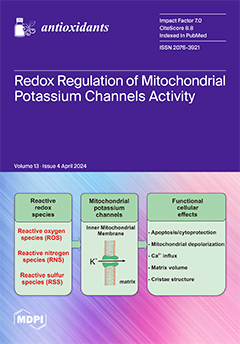Amaranth is a nutritionally valuable crop, as it contains phenolic acids and flavonoids, yielding diverse plant secondary metabolites (PSMs) like phytosterol, tocopherols, and carotenoids. This study explored the variations in the contents of seventeen polyphenolic compounds within the leaves of one hundred twenty
[...] Read more.
Amaranth is a nutritionally valuable crop, as it contains phenolic acids and flavonoids, yielding diverse plant secondary metabolites (PSMs) like phytosterol, tocopherols, and carotenoids. This study explored the variations in the contents of seventeen polyphenolic compounds within the leaves of one hundred twenty
Amaranthus accessions representing nine
Amaranthus species. The investigation entailed the analysis of phenolic content across nine
Amaranthus species, specifically
A. hypochondriacus,
A. cruentus,
A. caudatus,
A. tricolor,
A. dubius,
A. blitum,
A. crispus,
A. hybridus, and
A. viridis, utilizing ultra performance liquid chromatography with photodiode array detection (UPLC-PDA). The results revealed significant differences in polyphenolic compounds among accessions in which rutin content was predominant in all
Amaranthus species in both 2018 and 2019. Among the nine
Amaranthus species, the rutin content ranged from 95.72 ± 199.17 μg g
−1 (
A. dubius) to 1485.09 ± 679.51 μg g
−1 (
A. viridis) in 2018 and from 821.59 ± 709.95 μg g
−1 (
A. tricolor) to 3166.52 ± 1317.38 μg g
−1 (
A. hypochondriacus) in 2019. Correlation analysis revealed, significant positive correlations between rutin and kaempferol-3-O-β-rutinoside (r = 0.93), benzoic acid and ferulic acid (r = 0.76), and benzoic acid and kaempferol-3-O-β-rutinoside (r = 0.76), whereas gallic acid showed consistently negative correlations with each of the 16 phenolic compounds. Wide variations were identified among accessions and between plants grown in the two years. The nine species and one hundred twenty
Amaranthus accessions were clustered into six groups based on their seventeen phenolic compounds in each year. These findings contribute to expanding our understanding of the phytochemical traits of accessions within nine
Amaranthus species, which serve as valuable resources for
Amaranthus component breeding and functional material development.
Full article






